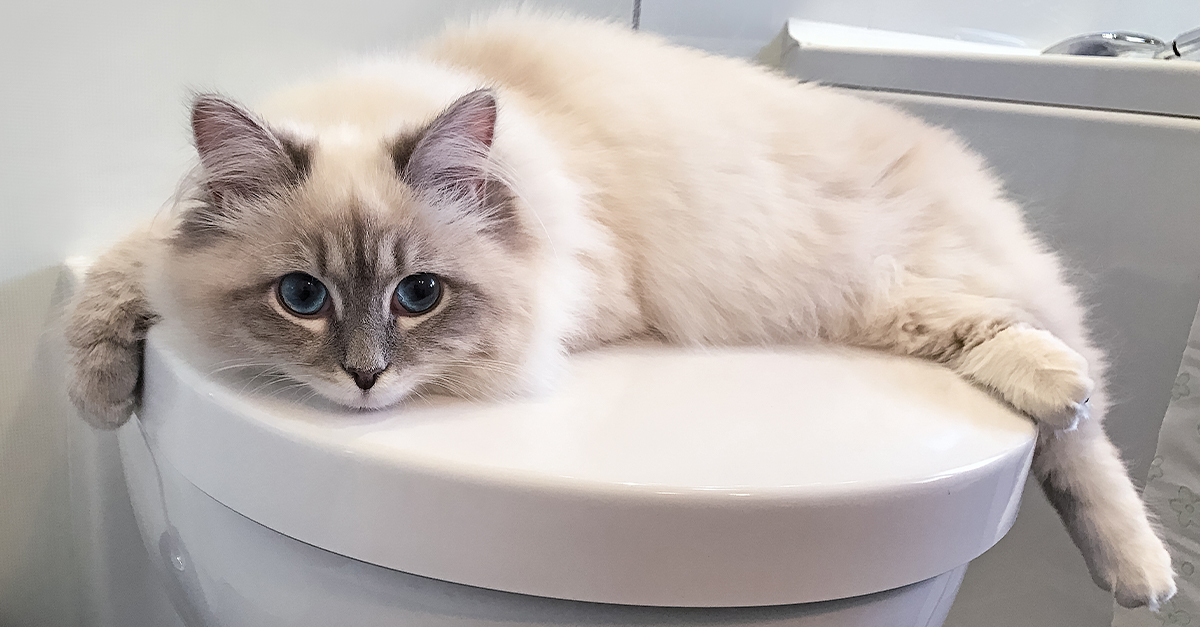Prevent Clogs and Damage: Don't Flush Cat Poop Down Your Toilet - Expert Recommendations
Prevent Clogs and Damage: Don't Flush Cat Poop Down Your Toilet - Expert Recommendations
Blog Article
Right here in the next paragraph yow will discover a bunch of awesome help and advice all about How to Dispose of Cat Poop and Litter Without Plastic Bags.

Introduction
As cat owners, it's vital to bear in mind just how we deal with our feline good friends' waste. While it might appear hassle-free to purge cat poop down the commode, this practice can have harmful consequences for both the environment and human health.
Alternatives to Flushing
Fortunately, there are safer and a lot more liable ways to dispose of feline poop. Take into consideration the complying with alternatives:
1. Scoop and Dispose in Trash
The most common approach of dealing with feline poop is to scoop it right into a biodegradable bag and toss it in the garbage. Make sure to use a devoted litter inside story and deal with the waste without delay.
2. Usage Biodegradable Litter
Go with naturally degradable feline trash made from products such as corn or wheat. These litters are environmentally friendly and can be safely taken care of in the garbage.
3. Bury in the Yard
If you have a yard, take into consideration hiding feline waste in a designated area away from vegetable yards and water sources. Make certain to dig deep enough to avoid contamination of groundwater.
4. Mount a Pet Waste Disposal System
Invest in an animal waste disposal system particularly created for cat waste. These systems utilize enzymes to break down the waste, minimizing smell and environmental impact.
Health and wellness Risks
Along with ecological problems, purging feline waste can additionally posture wellness risks to people. Pet cat feces may include Toxoplasma gondii, a bloodsucker that can cause toxoplasmosis-- a potentially severe health problem, specifically for expectant females and people with damaged body immune systems.
Ecological Impact
Purging pet cat poop introduces harmful microorganisms and bloodsuckers into the water, positioning a significant threat to marine environments. These impurities can negatively impact marine life and concession water top quality.
Verdict
Responsible pet ownership expands beyond supplying food and sanctuary-- it also involves proper waste management. By avoiding purging feline poop down the toilet and going with alternate disposal approaches, we can reduce our ecological footprint and safeguard human wellness.
Why Can’t I Flush Cat Poop?
It Spreads a Parasite
Cats are frequently infected with a parasite called toxoplasma gondii. The parasite causes an infection called toxoplasmosis. It is usually harmless to cats. The parasite only uses cat poop as a host for its eggs. Otherwise, the cat’s immune system usually keeps the infection at low enough levels to maintain its own health. But it does not stop the develop of eggs. These eggs are tiny and surprisingly tough. They may survive for a year before they begin to grow. But that’s the problem.
Our wastewater system is not designed to deal with toxoplasmosis eggs. Instead, most eggs will flush from your toilet into sewers and wastewater management plants. After the sewage is treated for many other harmful things in it, it is typically released into local rivers, lakes, or oceans. Here, the toxoplasmosis eggs can find new hosts, including starfish, crabs, otters, and many other wildlife. For many, this is a significant risk to their health. Toxoplasmosis can also end up infecting water sources that are important for agriculture, which means our deer, pigs, and sheep can get infected too.
Is There Risk to Humans?
There can be a risk to human life from flushing cat poop down the toilet. If you do so, the parasites from your cat’s poop can end up in shellfish, game animals, or livestock. If this meat is then served raw or undercooked, the people who eat it can get sick.
In fact, according to the CDC, 40 million people in the United States are infected with toxoplasma gondii. They get it from exposure to infected seafood, or from some kind of cat poop contamination, like drinking from a stream that is contaminated or touching anything that has come into contact with cat poop. That includes just cleaning a cat litter box.
Most people who get infected with these parasites will not develop any symptoms. However, for pregnant women or for those with compromised immune systems, the parasite can cause severe health problems.
How to Handle Cat Poop
The best way to handle cat poop is actually to clean the box more often. The eggs that the parasite sheds will not become active until one to five days after the cat poops. That means that if you clean daily, you’re much less likely to come into direct contact with infectious eggs.
That said, always dispose of cat poop in the garbage and not down the toilet. Wash your hands before and after you clean the litter box, and bring the bag of poop right outside to your garbage bins.
https://trenchlesssolutionsusa.com/why-cant-i-flush-cat-poop/

We were introduced to that write-up about Don’t flush cat feces down the toilet through someone on another site. Are you aware of somebody who is in to the topic? Feel free to promote it. Bless you for your time. Don't forget to pay a visit to our site back soon.
Call Today Report this page